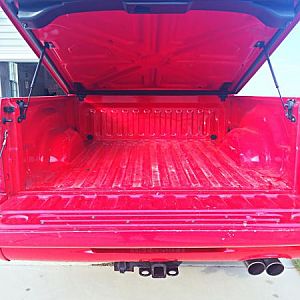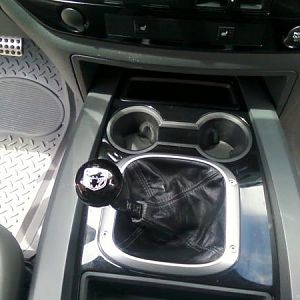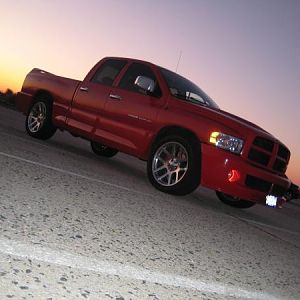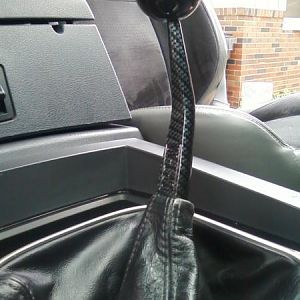The biggest kit from scoobert's post makes 50 liters of hydrogen/oxygen mix per hour. Since it is separating hydrogen an oxygen from water, than it is exactly at the right percentages to be recombined during combustion. Since our motors are 8.3 liters, it would take around 24 complete revolutions (12 full cycles, 2 strokes per revolution, 4 stroke motor) at full throttle to use up an hour's worth (50 liters) of production from the kit.
So, at 6000 rpm at full throttle it would used up the full hour's production in less than 1/4 of a second.
So, lets say you just want to supplement by mainly burning gasoline/air and supplement hydrogen/oxygen at 10%. And, let's say that you only care about cruising speeds, steady state on the highway.
At 15 mpg at 60 mile per hour, our trucks are burning 4 gallons/hour. At 14.7:1 air fuel ratio by mass, and air at .01lb/gallon, the truck is consuming 5880 gallons of standard temp/press air per hour plus the 4 gallons of fuel for 5884 gallons of vaporized air fuel mixture. So at 10% supplementation, it would need to produce 588.4 gallons/hour, times 3.78 liters/gal or 2224 liters/hour.
All of this for 10% supplementation at steady state, part throttle, highway cruising.
Since the largest unit produces 50 liters/hour, you would need around 44 of them for 10% supplementation. At 20 amps draw each, that would equal 880 Amps. At 13V, it would take 11440 watts or about 15 hp to power it (at 100% efficiency). So, you would need around 8 additional alternators and they would draw around 22hp (at 70% alternator efficiency) off the front of the motor.
All of this for only 10% supplementation at steady state highway cruising. Seems like a huge net loss to me....
 LOL Is it worth it? I have no idea if it works but wanted to see what you guys thought. I've asked him a question about where he got it etc. Will keep you posted.
LOL Is it worth it? I have no idea if it works but wanted to see what you guys thought. I've asked him a question about where he got it etc. Will keep you posted.




